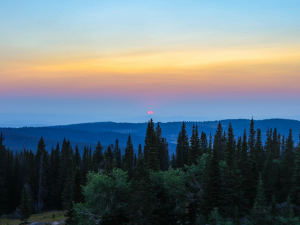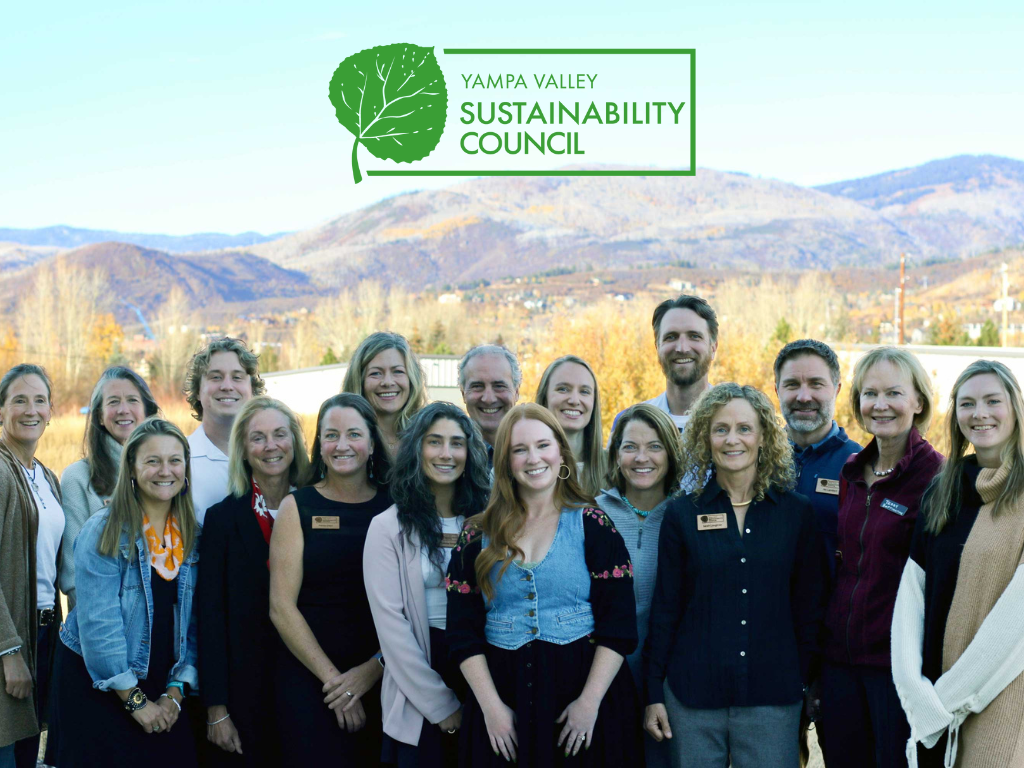Kate Brocato and Tim Sullivan | September 21, 2021
As seen in Homelink Magazine.
Every spring, we in the Yampa Valley, experience a beautifully visual phenomenon that has tremendous non-visual benefits. After a long winter of dormancy, our aspens, scrub oak, cottonwoods and many other tree species put on a vibrantly green display in what is known as the great leaf out. There is a freshness in the air that can be attributed to the increased supply of oxygen in the atmosphere produced by trees and other plants.
display in what is known as the great leaf out. There is a freshness in the air that can be attributed to the increased supply of oxygen in the atmosphere produced by trees and other plants.
While we are out enjoying the warmer weather, these trees are hard at work providing an array of ecosystem services. In urban areas (Steamboat Springs included), trees can be critical for removing particulate matter and other pollutants from the air, while also reducing higher temperatures caused by urban heat island effect, which lessens the need for energy intensive air conditioning.
Homeowners in the Yampa Valley areas can help clear the air and cool their homes and their neighborhoods by planting trees. Make sure to follow guidelines for the right kinds of trees to plant for your location. A good resource is the Arbor Day Foundation and their guide “The Right Tree in the Right Place.”
Away from our homes, trees in natural forests are even more important for protecting water and air quality. The trees along the Yampa River are important riparian habitat and help to lower river temperatures with their shade. And, together, our trees are all sequestering tremendous amounts of carbon, which will continue to be an important strategy for addressing climate change. In our higher altitude forests, trees help slow down runoff from our snowpack. The variety of forest types we have in the Yampa Valley – including Spruce-Fir, Lodgepole Pine, Aspen, and Oak Shrublands – create healthy wildlife habitat and help minimize some of the risk we face with wildfire.
However, wildfire in our forests is a growing concern, with warmer and drier summers increasing stress on trees and allowing fires to ignite and burn later in the season and higher in altitude. Wildfires are also an increasing source of air pollution in our mountain communities, and at some points in the summer our air can be unhealthy when winds bring smoke from fires in the area and even in other states. We all should support efforts to create healthy forest conditions through ecologically appropriate management actions. We should also be very cautious as we recreate in our forests. Pay attention to and follow local fire restrictions. When campfires are allowed, be sure to extinguish them completely before going to sleep or leaving your site. And, if you have a home in or near the forest, follow steps to minimize the risks to your home from wildfire by following guidelines from the Colorado State Forest Service on managing the Home Ignition Zone.
We are fortunate to live in a part of the world that has such vibrant forests that we can hike in and ski through and that provide us with so many benefits. So, the next time you see a tree, if you can’t hug it, at least say thank you for all that they do.






